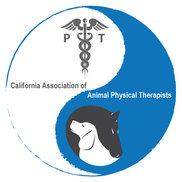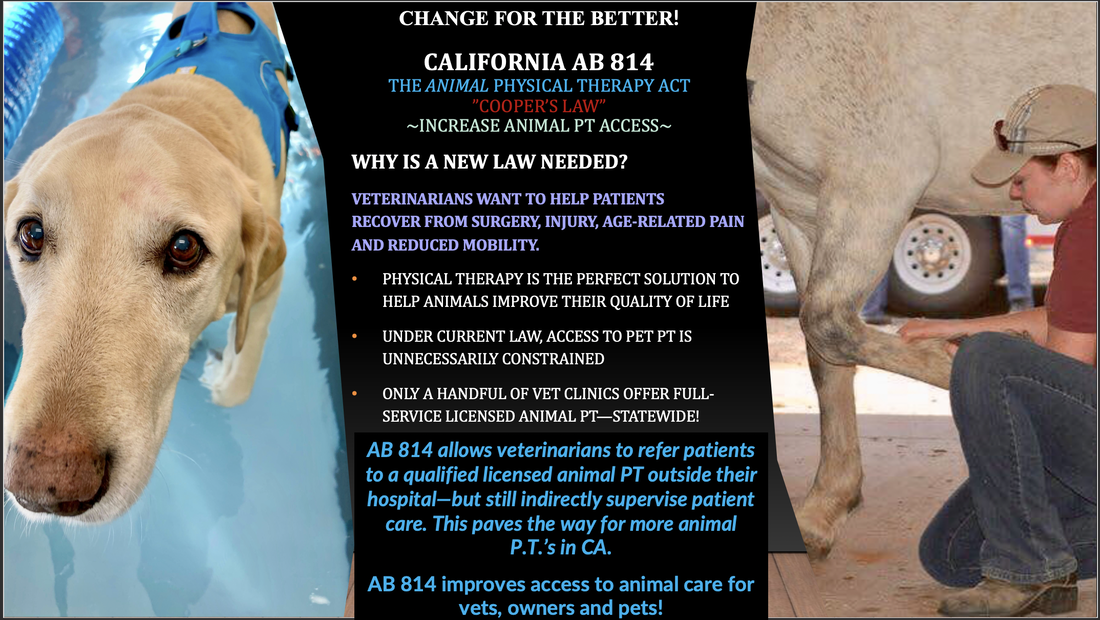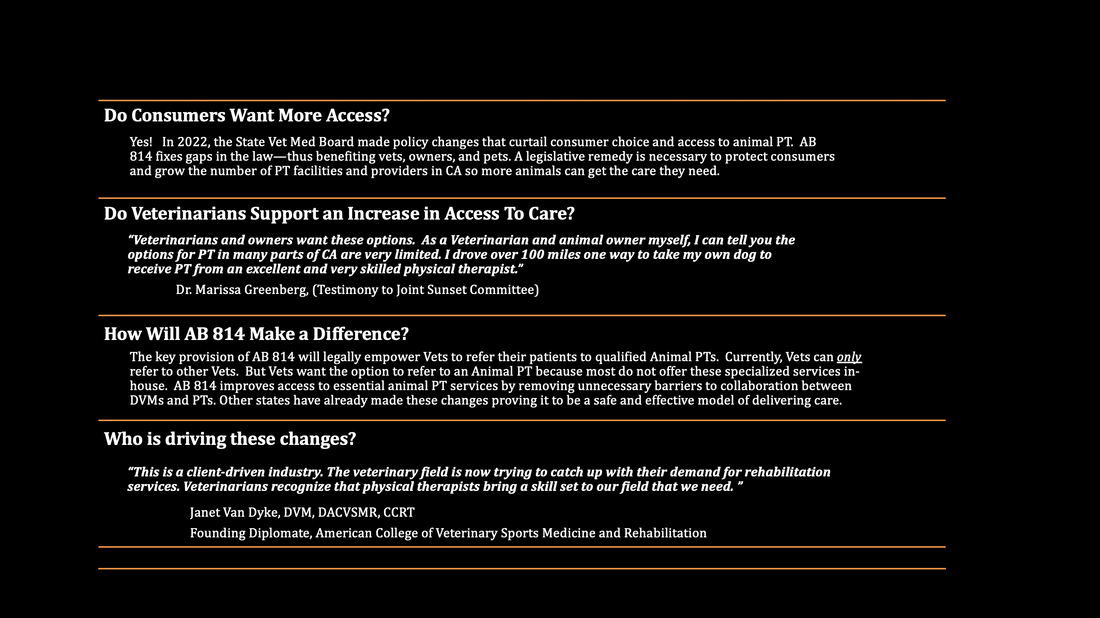
The issue:
California has an access to animal healthcare crisis and it is only going to get worse.
The California Veterinary Medical Board (VMB) added deleterious language to the Veterinary Medicine Practice Act in January 2022 that essentially created a veterinary monopoly for animal rehab services.
As a result, this new regulation now limits Californian's access to qualified non-veterinarian professionals for their pets by putting up unnecessary barriers to care. Animal physical rehab clinics that were previously in compliance are now facing closure, further reducing access to care.
Though everyone who has animals are affected by these new regulations, the hardest hit are those seeking rehab services for their horses and those who live in more rural communities.
Simply put, California has an access to animal healthcare crisis and the ONLY way to help address it is through passing legislation.
ANIMAL PHYSICAL THERAPY COALITION:
We seek to take a leading role to increase access to care for animals in California. In response to the new, deleterious regulatory language that was enacted in January 2022, a legislative remedy is necessary to increase access to care for animal lovers seeking alternative therapies for their pets.
For many years, physical therapists have established collegial, successful relationships with veterinarians to provide the highest quality of physical therapy services to animals through veterinary referral and indirect veterinary supervision. This status quo has since changed in California, and now highly trained animal physical therapists are mandated to practice only under DIRECT veterinary supervision.
SO HOW DO WE FIX IT?
Answer: Legislation. AB 814 is here and serves as the legislative remedy to increase access to rehabilitative care for animals.
YES on AB 814!



